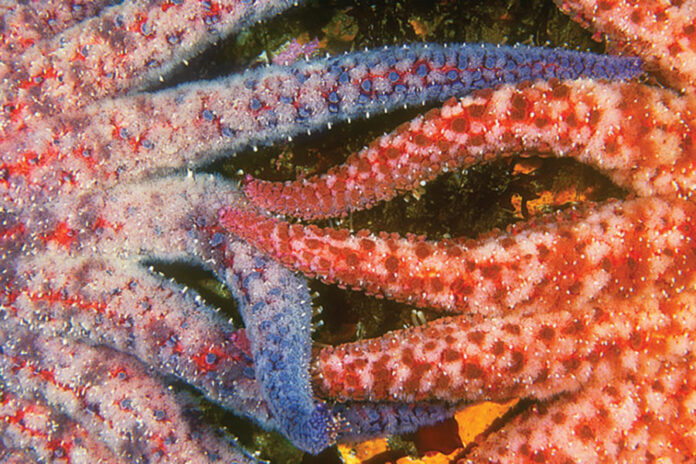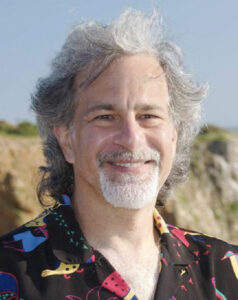
A self-proclaimed renaissance man, Felton’s Marc Shargel is a name many have come to know and appreciate.
Shargel has long had a calling to and interest in all things marine-based, and his years of underwater photography have resulted in three volumes of coffee table books titled, “Wonders of the Sea.” Each book is filled with vividly breathtaking photography and complete explanations of each photo’s subject; from strawberry anemones to harbor seals to a visual tour of different marine habitats, Shargel’s work is unmatched.
His studio is filled with images that welcome observers to take a deep breath and submerge themselves into the realm of the cold, nutrient-rich waters that support the Monterey Bay National Marine Sanctuary.
The photographer is well-known to local art lovers as well: his home-studio is a regular stop on the Santa Cruz County Open Studios tour each October, as well as the newer San Lorenzo Valley Art Tour each May.
His photography includes placid vistas beneath sunlit kelp forests, and encounters with everything from jewel-like snails to swarming jellies and huge sharks. He has presented at nearly every dive club in the greater Bay Area, and dozens of civic organizations as well.

On Feb. 3, Shargel will peel off his wetsuit and flippers to present a family-friendly talk at the Monterey Bay National Marine Sanctuary Exploration Center, 35 Pacific Ave., in Santa Cruz, across the street from the Santa Cruz Wharf.
Shargel’s photo show will be on display from Jan. 26 through Feb. 28 at the Center, with the First Friday monthly Art Tour event running from 4 to 7pm, and Shargel’s presentation at 5:45.
Shargel has observed slow but relentless decreases in marine life over 45 years of diving.
Since 1997, he has been a champion for marine reserves, which are no-take areas that function as refuges and nurseries for the life in our ocean. He played an integral part in drawing the boundaries for new marine reserves along the Central Coast. Renowned marine biologist Sylvia Earle calls them “hope spots.”
But in 2013, just six years after the new reserves went into effect, stunning changes in marine life revealed a new threat—the decimation of the kelp forests along the coast due to the explosion of the sea urchin population.
“In 2013, almost every sea star living on the coast of North America died. This was a mass die-off that was caused by an underwater pandemic that was lethal. Within two years, the sea stars had all started to come back, save one species,” Shargel said.
Sunflower Stars (Pycnopodia helianthoides), whom Shargel has nicknamed the “Great White Shark” of the sea star family due to its incredible predatory power, regularly feasted on urchins, keeping their numbers down.
“These creatures are three feet across from tip to tip, and although they move at a snail’s pace, they’re twice as fast as any other sea star. It’s the top predator of things that cling to the bottom of the ocean,” he said.
When the Sunflower Stars were killed in the mass die-off, the urchins began to amass in the area to enjoy their favorite food: sea kelp.
With more urchins feasting on the kelp and no means to mitigate the damage, the entire ecosystem is under attack, and it’s not just affecting creatures with gills; the Southern Sea Otter, which lives along the California coast from San Mateo County to Santa Barbara, relies on kelp for its biosphere.
As the kelp forests are consumed by out-of-control urchins, otters are in danger of having their habitat completely altered by the destruction, resulting in an oceanic desert.
These are just some of the tales that Shargel wants land-lubbers to hear.
“I love diving in local waters because it’s so inspiring and beautiful, and at the same time, I want to bring awareness to this ecological crash we’re living through. We’re all interconnected in a big web, and this topic impacts us all,” Shargel said.
Take a virtual dive through the Monterey Bay National Marine Sanctuary with Shargel on Friday, Feb. 3, at the Exploration Center. For more information, visit montereybay.noaa.gov. To learn more about Shargel’s work, visit LivingSeaImages.com.












